The Aloe Vera is a beloved and popular houseplant that is easy to care for. It does present one challenge, however. It can become leggy during growth. Why do you get leggy aloe vera?
Many reasons can lead to the development of leggy aloe vera plants. A couple of the most common reasons are that the plant has been overwatered and fertilized too much.
This guide will cover the various reasons why an aloe vera plant will become leggy and ways to fix the leggy growth.
- Related article: Aloe Vera Plant Care
7 Key Takeaways on Leggy Aloe Vera
- Leggy aloe plants usually happen because of not enough light, too much water, wrong temperature, or too much fertilizer.
- Too much water can cause root rot and nutrient problems. Let the soil dry out completely before watering again.
- Aloe plants do best in temperatures between 55 and 80°F (13 to 27°C). Extreme temperatures can stress the plant and make it grow leggy.
- Not enough light makes aloe vera stretch for more light. It needs 6-8 hours of bright, indirect sunlight each day to stay compact.
- Too much fertilizer leads to weak, long growth. Use a balanced, water-soluble fertilizer sparingly and only during the growing season.
- Small or crowded containers can stunt root growth and nutrient uptake, leading to leggy plants. Choose the right size pots and repot as needed.
- Pruning leggy aloe vera and repotting it in fresh, well-draining soil can help restore its compact, healthy look.
Reasons Your Aloe Vera Is Leggy
When an aloe vera becomes a leggy plant, it’s a sign of stress from too little light, too much water, or excess fertilizer. This stretching, called etiolation, indicates the plant is struggling to reach basic needs like light or warmth.
1. Your Aloe Vera Is Overwatered
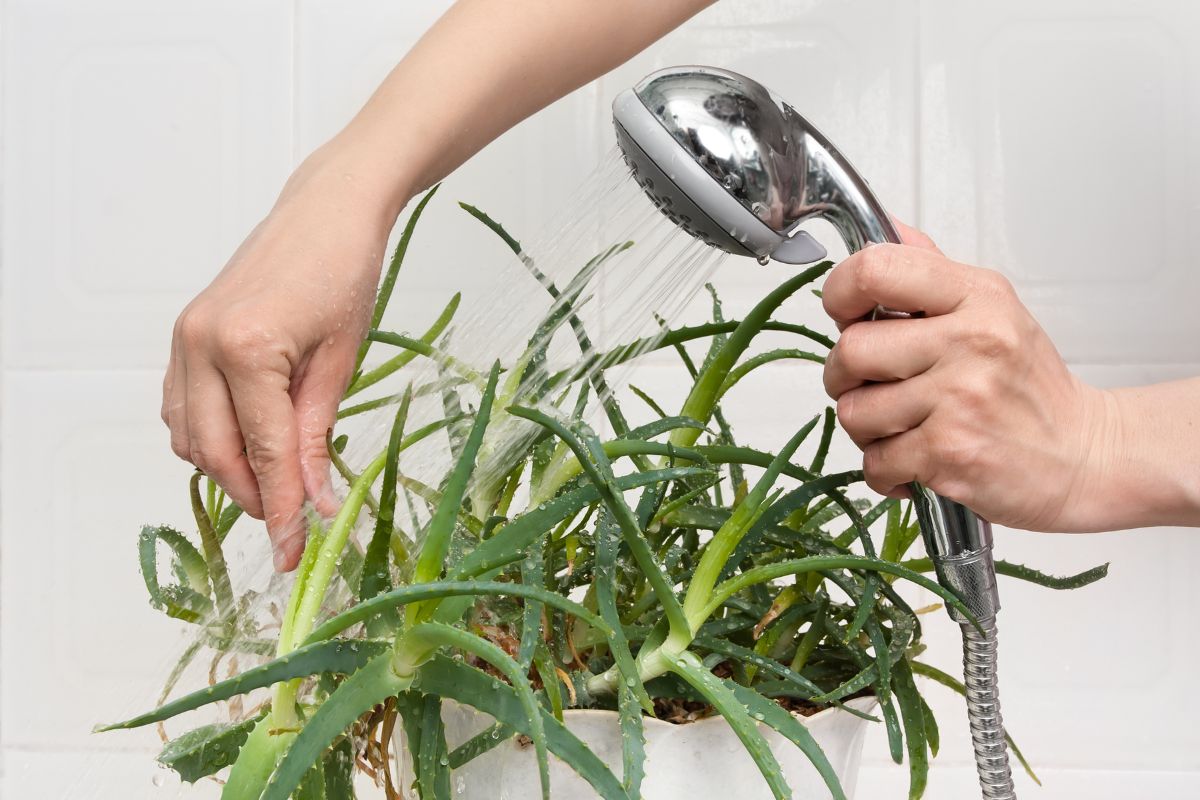
An overwatered aloe vera plant can cause its leaves to become leggy. These succulents, adapted to dry conditions, store water in their thick leaves. When overwatered, the soil stays damp, which rots the roots and limits their nutrient absorption.
This leads to weak, elongated growth as the plant stretches for light and nutrients. Soft, droopy leaves and diluted nutrients also contribute to the legginess. To prevent this, let the soil dry out completely between waterings and ensure the pot has good drainage.
2. Your Aloe Vera Is Not Being Grown in the Right Temperature
Improper temperature can also make aloe vera plants leggy. They thrive between 55 and 80°F (13 to 27°C). If temperatures drop below 50°F (10°C), the plant might get cold damage, leading to legginess.
High temperatures above 100°F (38°C) can also stress the plant, causing it to stretch. Keep your aloe vera within the ideal temperature range and consider indoor placement if your climate is extreme.
3. Your Aloe Vera Is Not Getting Enough Light
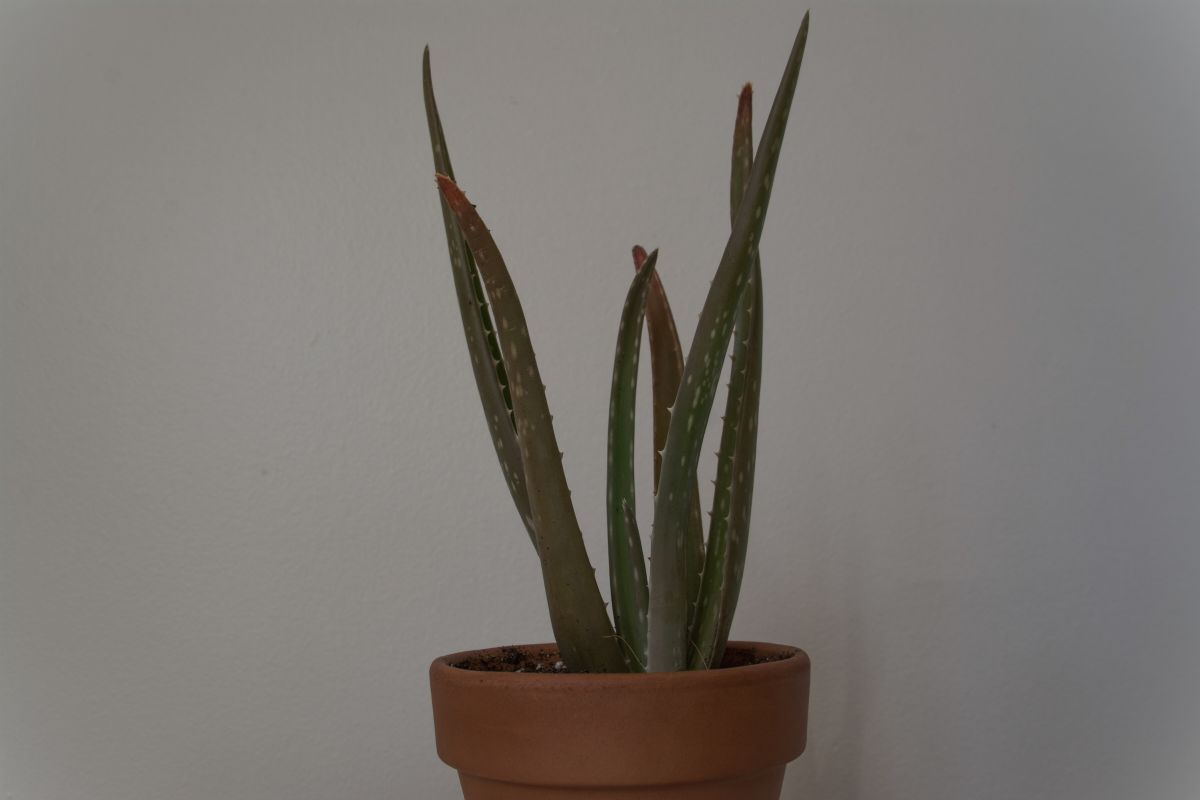
Insufficient light is a major cause of leggy aloe vera plants. Aloe vera needs 6-8 hours of bright, indirect sunlight daily to stay compact. Without enough light, the plant stretches and grows leggy with long stems and widely spaced leaves.
Here’s a guide to providing proper light:
- Indoors – Place the plant near a south or west-facing window for the best indirect light. If natural light is limited, use LED grow lights or fluorescent tubes with a color temperature of 6,000-7,500 Kelvin, positioned 6-12 inches from the plant for 14-16 hours a day.
- Outdoors – Ensure the plant gets at least 6 hours of direct sunlight. In hot climates, provide some afternoon shade (not dark corners) to prevent leaf burn.
- Rotation – Regularly rotate the plant to promote even growth and prevent it from leaning.
If your aloe plant is already leggy, increase its light exposure gradually. Move it to a brighter spot or add artificial lighting. Give plenty of light but avoid sudden direct sunlight to prevent leaf burn.
4. Your Aloe Vera Is Being Over-Fertilized
Over-fertilization can make aloe vera plants leggy. Aloe vera doesn’t need much fertilizer, and too much can cause problems like salt buildup, root burn, and nutrient imbalances, leading to weak, elongated growth.
Proper Fertilization Practices:
- Fertilizer Type – Use a balanced, water-soluble fertilizer for succulents or dilute a standard houseplant fertilizer to half-strength.
- Frequency – Fertilize sparingly—once or twice during the growing season (spring and summer). If you repot annually, you might not need extra fertilizer.
- Application – Apply fertilizer to moist soil to avoid root shock. For liquid fertilizers, mix as directed and pour at the base, avoiding the leaves. For granular fertilizers, sprinkle lightly and water immediately.
- Signs of Over-Fertilization – Watch for white, crusty salt on the soil surface, browning leaf tips, and stunted growth. If these occur, flush the soil with water to remove excess salts and lower nutrient levels.
5. Your Aloe Vera’s Container Is Too Small
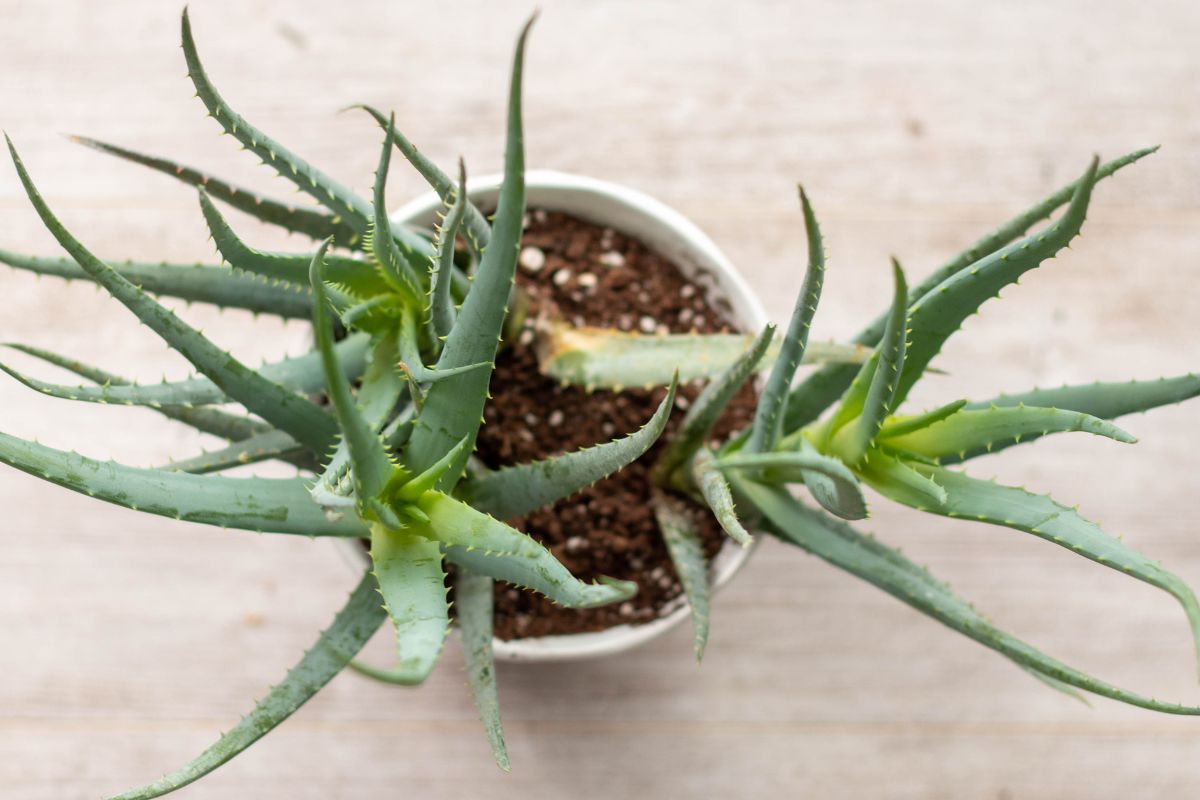
Using the right container size and fixing overcrowding are key for healthy aloe vera growth. A small container can make aloe vera plants leggy because cramped roots can’t absorb nutrients and water well.
Here’s how to choose the right container size:
- Minimum Size – Use a pot with at least a 12-inch (30 cm) diameter. This gives roots enough room and prevents them from becoming root-bound too quickly.
- Incremental Increase – When repotting, choose a pot 1-2 inches (2.5-5 cm) larger in diameter. Avoid pots that are too large as they can hold too much water and cause root rot.
Selecting the right container materials is also important:
- Terracotta Pots – These are ideal because they are porous. They help soil dry out quickly and prevent overwatering.
- Plastic Pots – These retain moisture longer. Make sure they have good drainage to avoid waterlogging.
- Ceramic Pots – Glazed ceramic pots also retain moisture. Ensure they have proper drainage and use a well-draining soil mix.
Overcrowding can make aloe vera leggy by limiting space for root growth and causing competition for nutrients and water.
Here are solutions for overcrowding:
- Repot into a Larger Container – Choose a pot 1-2 inches larger in diameter.
- Separate Offsets – Gently separate and pot individual offsets.
- Use Proper Soil – Opt for a well-draining succulent mix.
- Provide Adequate Light – Place the repotted aloe in bright, indirect light.
- Adjust Watering – Let the soil dry out between waterings to avoid overwatering.
By using the correct container size and fixing overcrowding, you can keep your aloe vera plants healthy and strong.
How to Fix Leggy Aloe Vera
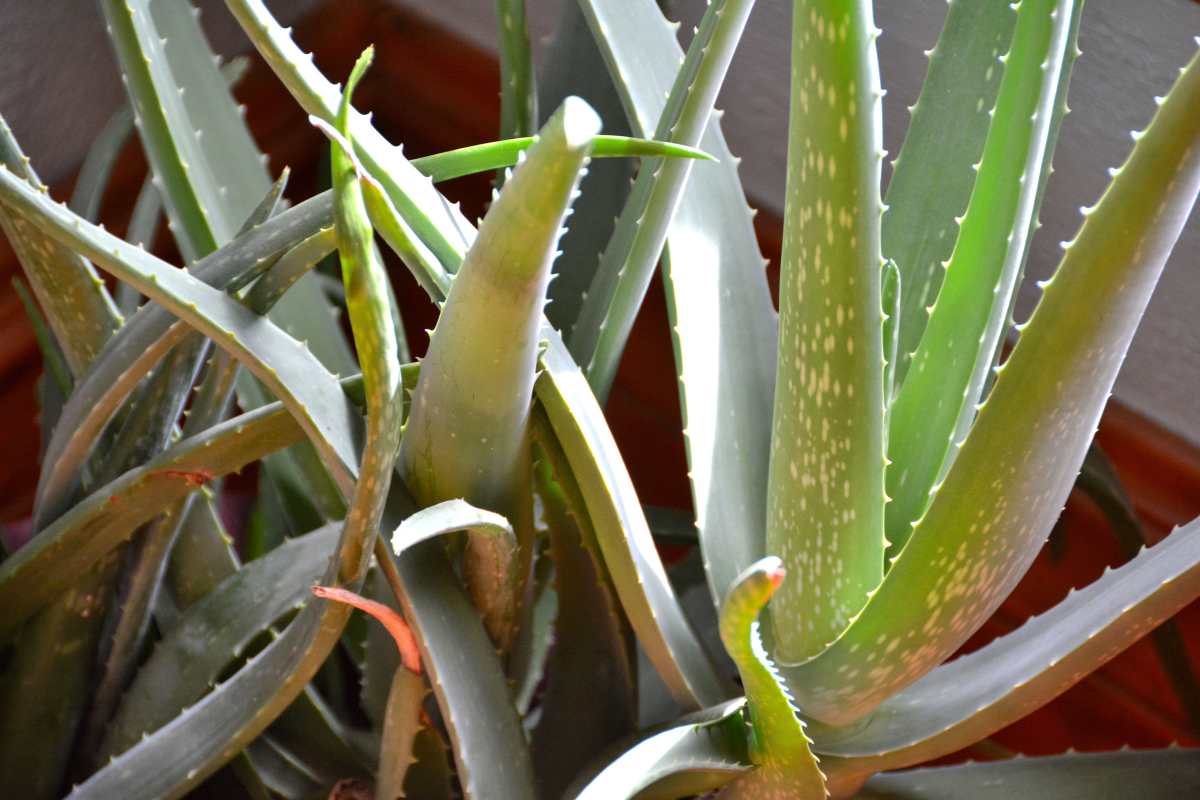
If your aloe vera plant looks leggy, here are some ways to fix it:
- Trim Your Aloe Plant – Cut back extra leaves to help your aloe plant grow bushier. It may look messy at first but will improve soon. Always remove mushy or dead leaves.
- Change the Pot – Pick a new pot at least one inch larger than the root ball. A wider, shallower pot is best because aloe roots grow out, not down.
- Repot Your Aloe – Use fresh, fertile soil to repot your aloe. If the plant is rootbound or the soil is depleted, repotting is necessary. A soil mix for cacti and succulents works best.
- Give Enough Light – Make sure your indoor aloe gets at least 6 hours of indirect sunlight daily. Aloe vera loves warm, sunny spots but avoids direct sunlight as it can damage the leaves.
- Adjust Temperature – Increase room temperature to boost indoor aloe growth. If it gets leggy, lower the temperature. Keep the room between 55°F and 80°F. Use a temperature monitor with an alarm to stay in this range.
How to Prune Leggy Aloe Plant
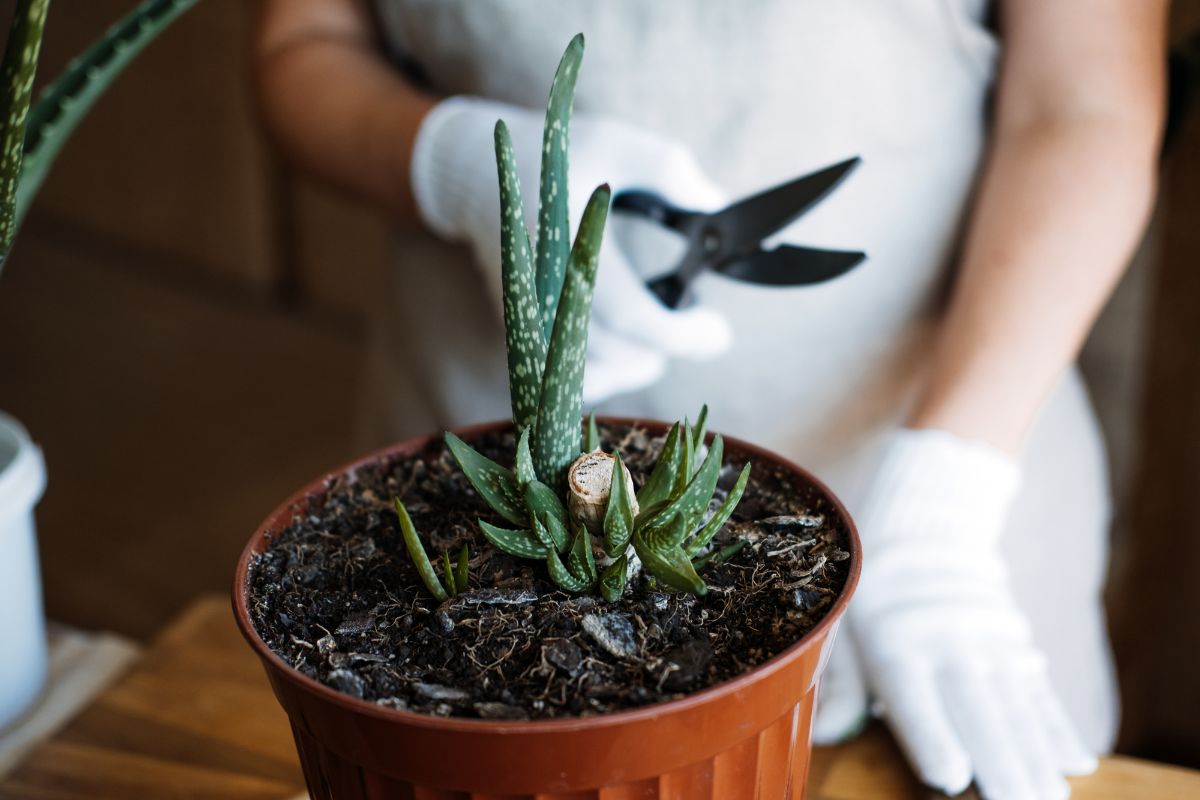
Pruning leggy aloe vera helps maintain its health and appearance. Follow these steps:
- Examine the Plant – Check the overall shape and identify leggy, drooping, or damaged leaves. Look for overcrowding, yellowing, or broken leaves.
- Select the Proper Tools – Use a sharp, clean knife, scissors, or pruning shears. Sterilize the blades with rubbing alcohol. Wear gloves to avoid irritation from aloe vera gel.
- Remove Damaged Leaves – Remove damaged or dried leaves, cutting close to the stem. Cut at an angle to prevent water from sitting on the cut surface.
- Trim Excess Outer Leaves – Start with the older, outer leaves. Do not cut the young leaves near the center.
- Address Overcrowding – Gently separate and pot offsets (pups) individually. If the plant is root-bound, repot into a slightly larger pot with well-draining soil.
- Allow the Plant to Heal – Skip watering for a few days to let cuts heal. Place the plant in bright, indirect sunlight.
- Maintain Regular Care – Regularly check for legginess or damage and prune as needed. Adjust watering, light, and fertilization to prevent future legginess.
How to Repot Leggy Aloe Vera
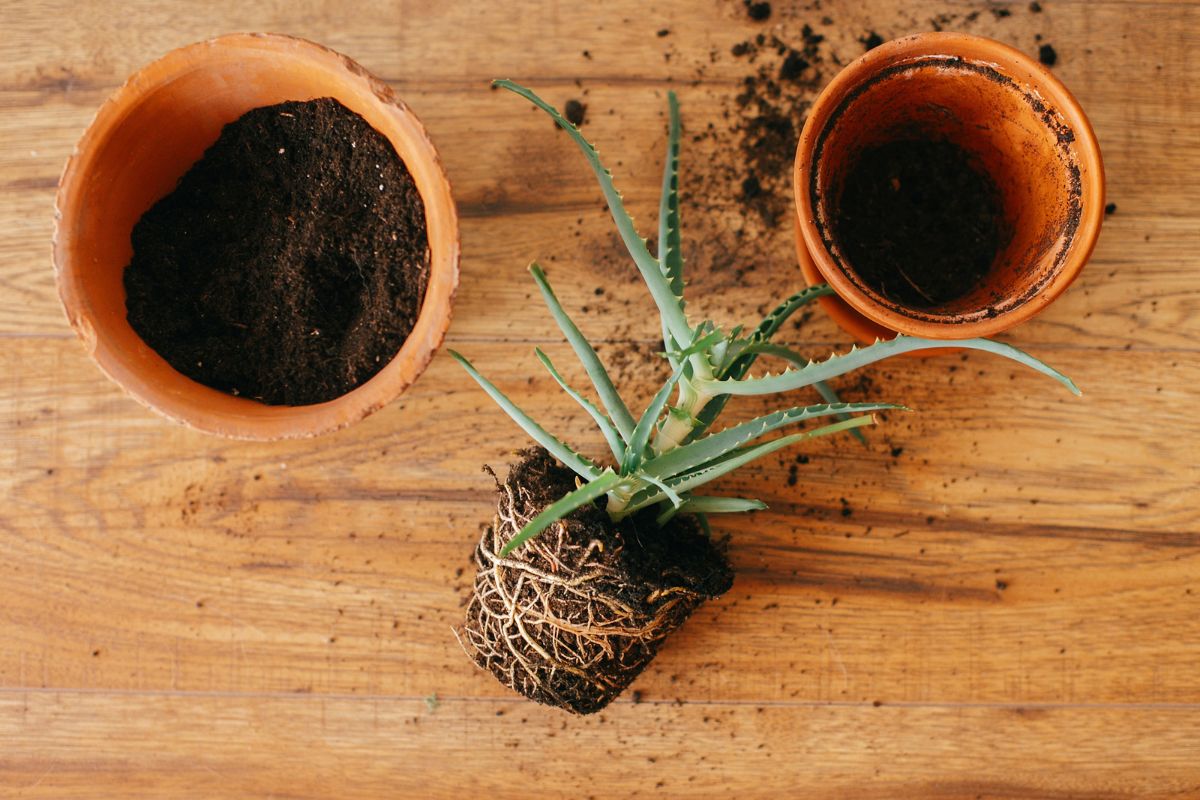
After pruning, it is a good idea to repot your aloe vera plant in fresh soil mix. You can also choose a new pot for repotting. A terracotta pot is a good choice because the container drainage holes are usually pretty good.
Follow these repotting steps to promote healthy growth of aloe vera:
- Prepare the Materials – Choose a new pot that is 1-2 inches larger in diameter than the current one and ensure it has drainage holes. Gather a well-draining succulent or cactus soil mix, a sharp knife or scissors, gloves, and a small trowel.
- Water the Plant – Water your aloe vera 24 hours before repotting to reduce transplant shock and make it easier to remove from the pot.
- Remove the Aloe Vera from Its Current Pot – Tap the sides of the pot gently to loosen the potting soil. Carefully remove the plant from the pot, using a knife if needed to loosen the soil around the edges.
- Trim Leggy Growth – Cut off any leggy stems with a sharp, clean knife or scissors. Allow the cut areas to dry and callous over for a few days to prevent rot.
- Prepare the New Pot – Add a layer of well-draining soil mix to the bottom of the new pot. Place the aloe vera in the center, burying the stem deeper if it’s long enough to stabilize the plant.
- Fill and Settle the Soil – Add soil around the plant up to the base of the leaves, pressing gently to remove air pockets. Ensure the soil level is just below the rim of the pot.
- Allow the Plant to Settle – Wait about a week before watering the plant to let it adjust and allow the cuts to heal. Place the repotted aloe vera in bright, indirect sunlight.
- Resume Care – After the waiting period, water sparingly, allowing the soil to dry out completely between waterings. Monitor the plant for new growth and adjust care as needed.
Leggy Aloe Vera Plant Final Thoughts
Noticed some of your aloe veras getting a bit leggy? Don’t worry, it’s an easy fix. You just need to act fast when you spot those long, stretched-out stems.
Get your aloe veras back in shape with the above-mentioned tricks. You’ll have them looking lush and healthy in no time.
Taking care of a leggy plant can be a bit tricky, but I promise it’s not as scary as it seems. With a little TLC, your aloe will be thriving again before you know it.
Leggy Aloe Vera Plant FAQs
1. What Causes Leggy Growth In Aloe Vera Plants?
Leggy growth in aloe vera is often caused by insufficient light, overwatering, improper temperature, or over-fertilization. These factors stress the plant and lead it to stretch for better conditions.
2. How Can I Fix Overwatered Aloe Vera?
To fix overwatered aloe vera, allow the soil to dry out completely between waterings and ensure the pot has good drainage. Adjust watering practices to prevent further root rot and leggy growth.
3. What Is The Ideal Temperature Range For Aloe Vera?
Aloe vera thrives in temperatures between 55 and 80°F (13 to 27°C). Extreme temperatures below 50°F (10°C) or above 100°F (38°C) can cause stress and lead to leggy growth.
4. How Much Light Does Aloe Vera Need To Avoid Legginess?
Aloe vera needs 6-8 hours of bright, indirect sunlight daily. Insufficient light causes the plant to stretch, so provide adequate light either through natural sunlight or artificial grow lights.
5. How Often Should I Fertilize Aloe Vera To Prevent Legginess?
Fertilize aloe vera sparingly, once or twice during the growing season (spring and summer), using a balanced, water-soluble fertilizer. Over-fertilization can lead to nutrient imbalances and leggy growth.
To learn more about caring for aloe offshoots and your aloe vera plants, check out these articles for this popular plant:




